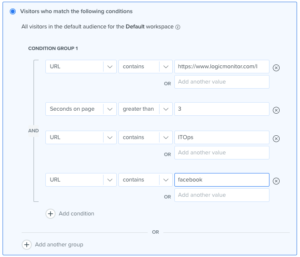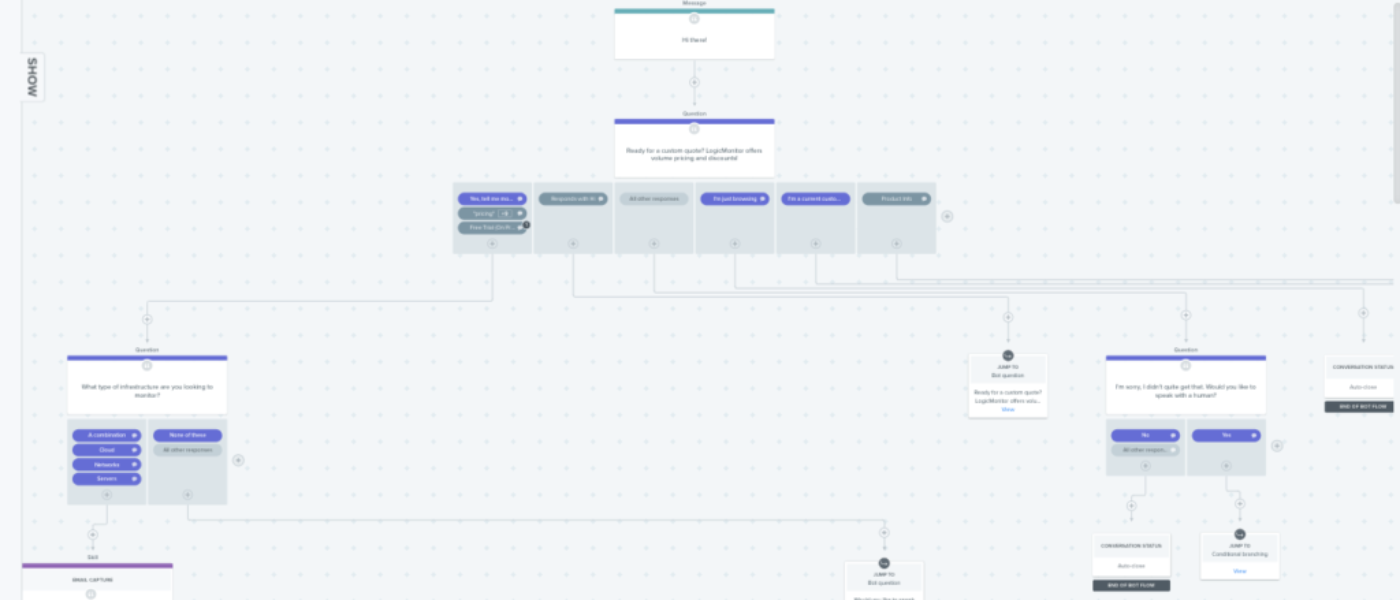Conversational marketing has become a pillar of a web visitor’s experience. In my current role, Drift drove 15% of our originated growth team pipeline and influenced 8.8% of existing opportunities business-wide in 2021. The ability to use information we already know about a visitor, or prospect, and engage with them specific to their need has both helped us qualify prospects as well as accelerate deals. While we may have become used to seeing chatbots pop up on our favorite websites, it should be so much more than a “Hi, how can I help you?”
In a traditional SaaS sales motion, where deal sizes range in from tens to hundreds of thousands of dollars, qualifying a prospect is a key part of the process. Let the chatbot help you do that. Here are some considerations I make when I set up a chatbot:

1. Targeting
Every web visitor is different! By using what we already know, we can tailor the website experience. By using UTMs to append links for advertising, e-mail nurtures, and social media, you can know exactly where a visitor is coming from and what piece of content may have prompted them to act. For example, if they came from Facebook and clicked ITOps content, your introductory message (or, “hook,”) might look very different than one to a visitor who found you from a direct search.
You may also change up your targeting based on time on site, how many times they’ve visited, and what page they are viewing. If they are on the pricing or signup page, you might assume they are closer to a purchase than someone landing on the home page, so, ask them right away if they’d like to speak with someone about their needs!
2. Qualifying questions
Not every web visitor is on your page to get information about a purchase. Think about all the people who come to your site: customers, employees, potential hires, and, yes, sales prospects. How can we get those that are looking for information about your product in order to inform their buying cycle to the right person? Automated qualifying questions! If your product suite is really only enterprise-focused, maybe your chatbot asks the visitor how many widgets they sell in a year or how many seats they will need. If it’s a very technical product, maybe you need to weed out the wrong audience by asking a few technical questions about their dev environments. If they don’t know the answers, they probably aren’t a good fit.
3. Automated meeting requests

Spoiler alert: you don’t have to have someone managing the chatbot 24/7. If you have your targeting and qualifying questions set up in a way that gets the right people ready to book a meeting, you can connect your sales or marketing development representatives’ calendars to the chatbot so that the visitor can book a meeting at a time that is convenient to them without every talking to anyone! You can ask if they want to leave notes, and reps can even send personalized written or video messages as a follow up.
4. “Skip the form” fills
If your primary conversion action is a content download or video view, and they are already engaged in the chat, why make them fill the form on page? Most conversational marketing tools play very nicely with your existing CMS and can populate the same forms in-chat that will send contact information into your CMS or Salesforce instance. Allow your visitors to get all of this done in one chat box.
In the next step of digital transformation, and as privacy laws continue to evolve, layering on data enrichment will be a fun evolution in the conversational marketing space. We can take 1st and 2nd party data to provide firmographic and demographic information that makes each user’s web visit unique. Let me help you personalize the experience for them!
